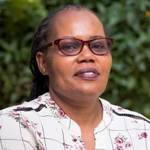
FORESTS & PEOPLE
FORESTS & PEOPLE
CIFOR-ICRAF at IUFRO 2024
23-29 June 2024, Stockholm, SwedenAgroforestry: conserving tree species diversity while reducing insect pest threats to farming
Natural environments host broad diversity of genetic resources all over the world. However, with increased over-harvesting of tree species coupled with loss of forests land to urban and agricultural developments the loss trees biodiversity and extinction of important and iconic tree species has became prevalent. The situation is exacerbated by the shifting local climatic conditions. The global decline and extinction of tree species have triggered plummeting of associated fauna especially insect populations, with a reported decline of more than 40 % and a third being endangered. Commercial monoculture of trees has further accelerated their decline. Even though genebanks play a major role in conservation, ex-situ conservation in seed banks lacks the ability to sustain natural fauna populations associated with the forest trees. With destruction of their natural habitat, the insects are therefore pushed out of their natural refuge into cultivated lands where they may adapt to new hosts. The result is that this is interpreted insect pest threats. It is therefore important to deliberately design refugia for the insect populations forced out of forests. Apart from public gardens and arboreta, agroforestry presents an opportunity for reforestation, conservation, multiplication and restoration of native species through woodlots, windbreakers, living boundary fences, contour strips, etc. Trees on farms have the potential to act as insects refugia and help shift insect pests from croplands too. Studies have shown that insect pests and pathogen populations are regulated by a high genetic base of tree species which also foster survival of natural enemies. Encouraging diversity of trees on farm will not only result to more benefits to famers but also broad genetic resource conservation in the locality; and this will be beneficial in offering the insects a more suitable habitat hence less destruction to the crop on farms. There is therefore a need to establish the local indigenous tree species diversity and their associated insect species populations, to develop strategies that will enhance their conservation and at the same time reduce insect-pest threat to farm productivity. We explore these approaches in this presentation.













